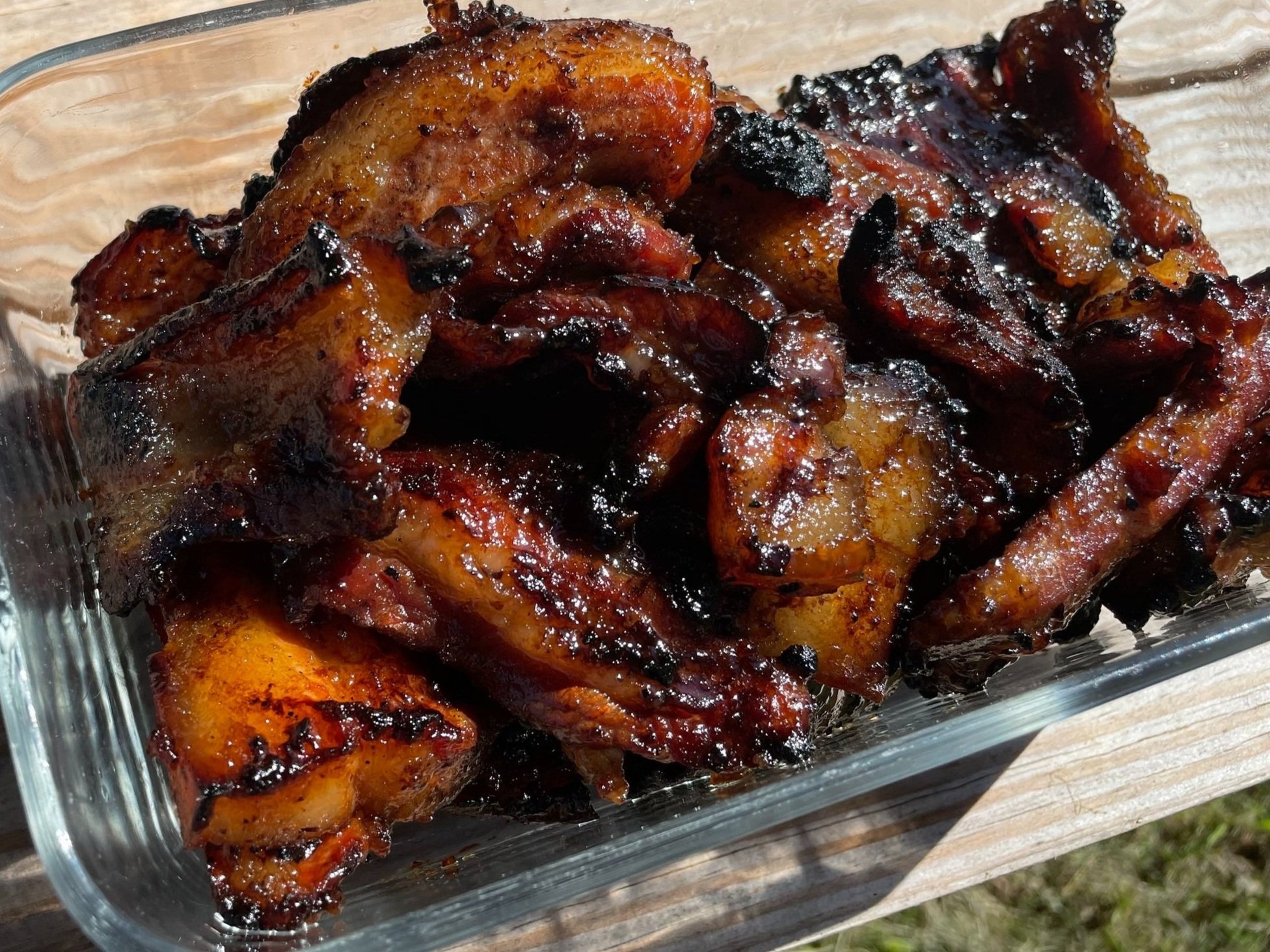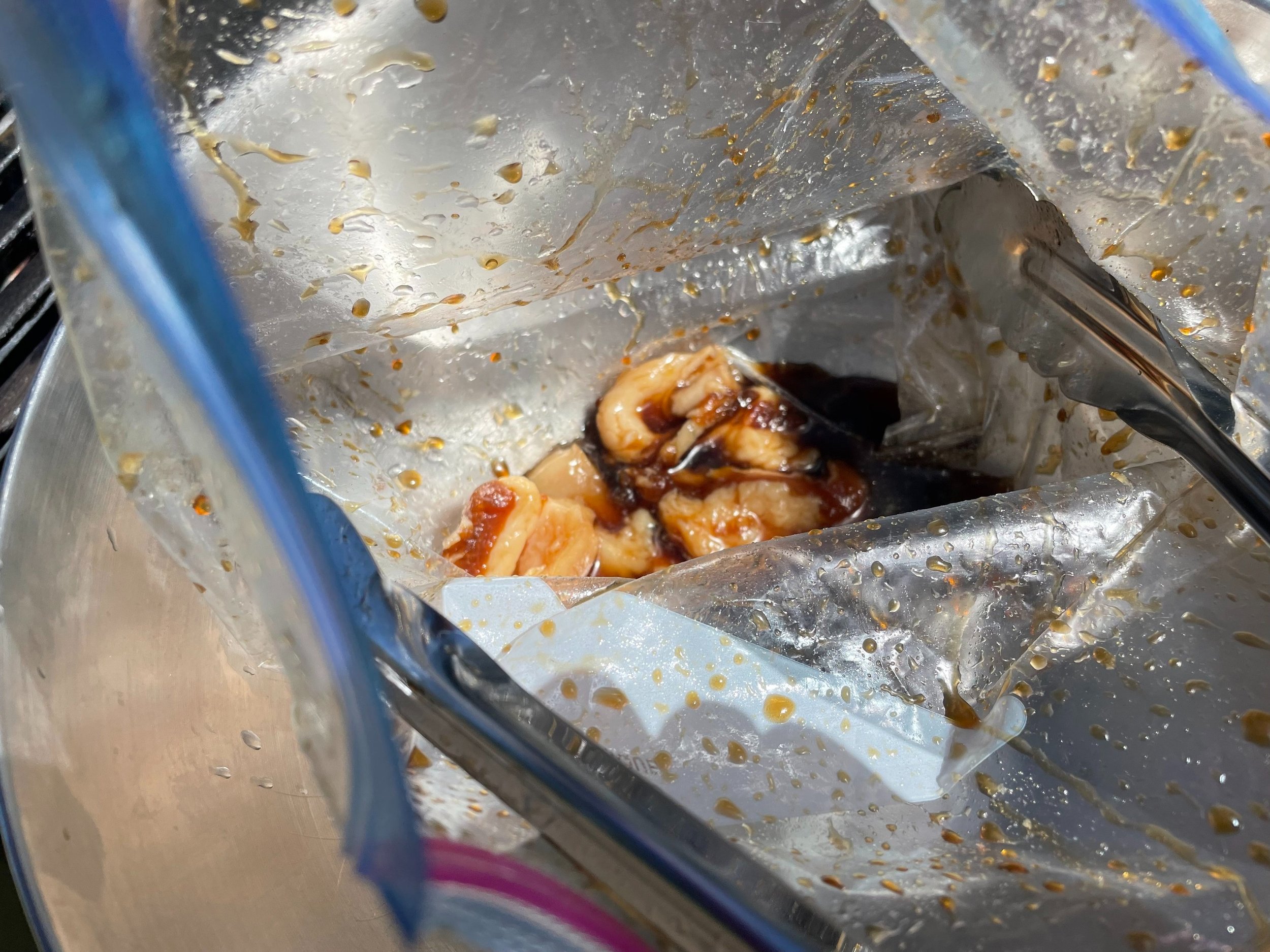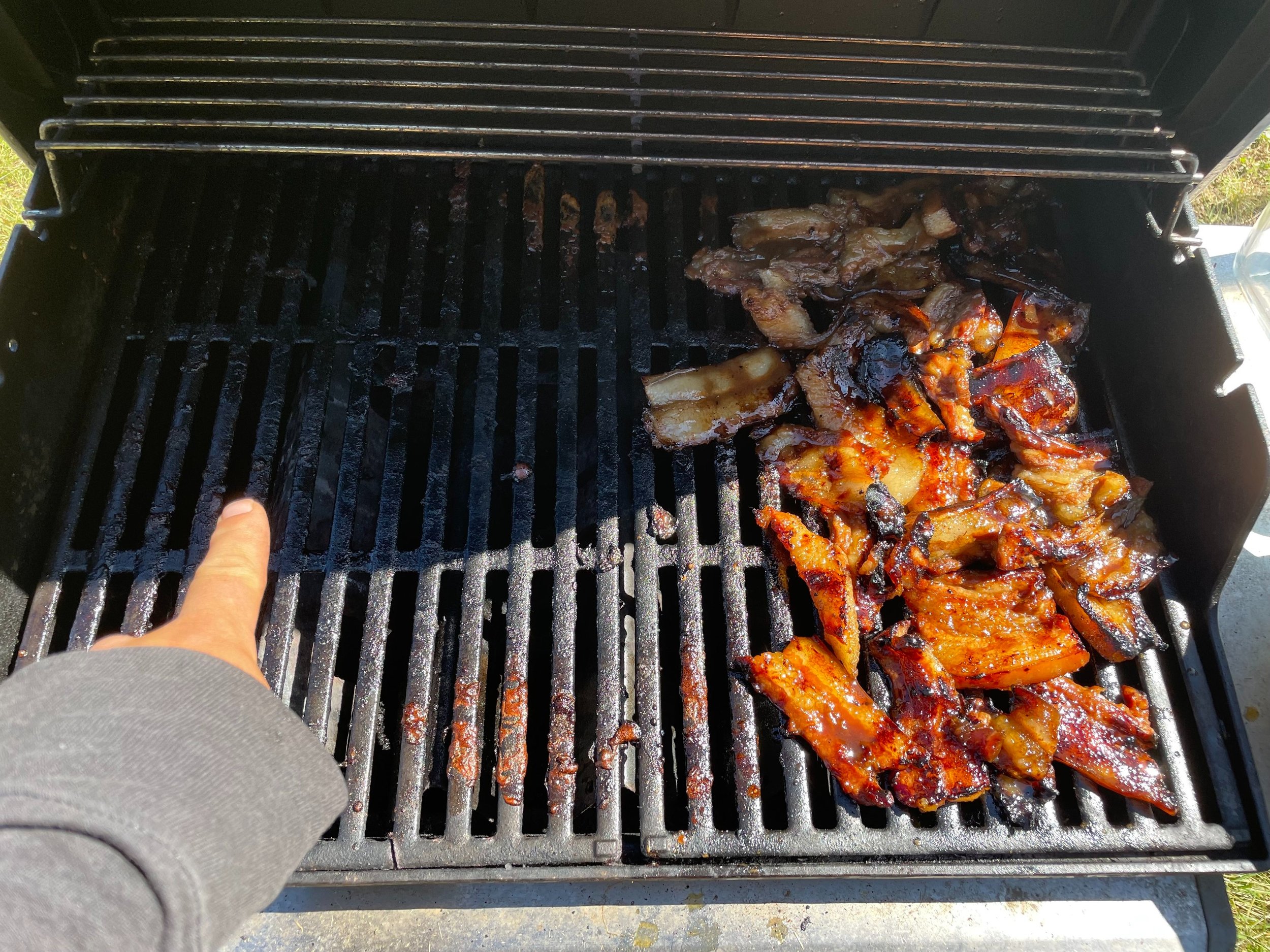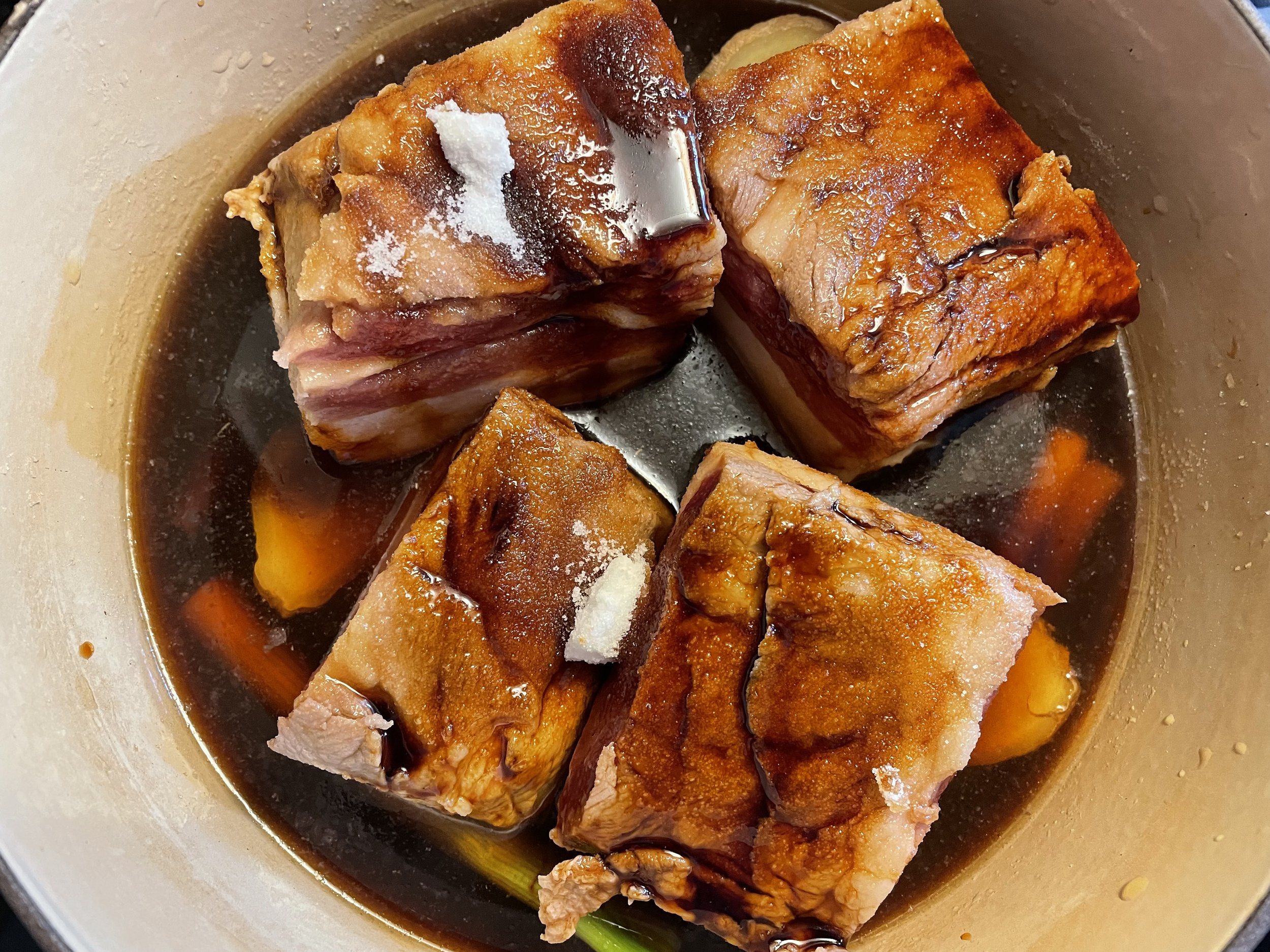Kimchi Jigae (Kimchi and Pork Soup)
/This is such an easy soup to make, provided you have some fatty pork and some old kimchi. It’s so easy, and tastes great provided you like kimchi and a little spice.
I once lived on kimchi and sardines for a week. I was unemployed and job hunting and I didn’t have the energy at the end of the day to cook. There was a place nearby my apartment where I could get a decent side of kimchi “to go” for a dollar, so I would take that home and dump a can of sardines in oil on top and eat that for dinner. Not bad. There was also a place you could get a slice of pizza for a dollar, but I was trying to eat healthy and stay away from junk food. I think I got a job pretty soon after that though, possibly motivation helped.
To make kimchi jigae, first cut up a pork belly roast or some other fatty pork into chunks (about an inch). Slice at least one onion and prep however much garlic you want.
Put some lard in the bottom of your stew pot and put it on high heat. Add the pork and cook until the pork is pretty well cooked. Add in the onion and garlic and cook for another minute or so.
If you have gochugaru of course use that, but you can get by just fine with some dried red pepper flakes and cayenne pepper. Or maybe like a smoky chile powder. Add in however much spice you want. Also add some powdered ginger if you have it. If you don’t want spice, don’t make this dish.
Stir to incorporate the spice, then dump in your old leftover kimchi, stir again, and add enough water to cover everything.
Bring the soup to a boil, then turn down to a simmer and simmer for…well, everything is cooked now but it will taste better if you simmer it for several hours and let all the flavors meld and the pork fat melt into the soup. But you don’t have to.
Serve over rice or on its own.
(Okay yes you CAN put tofu into the soup, if you really want to be that kind of person. But you could also just add more fatty pork. I don’t like any of the recipes that call for adding rice cakes or other starch, because when I make kimchi jigae I make A LOT and those rice cakes and other starches just get weird, I think, when you re-heat them. I’d rather keep the starch on the side.)









